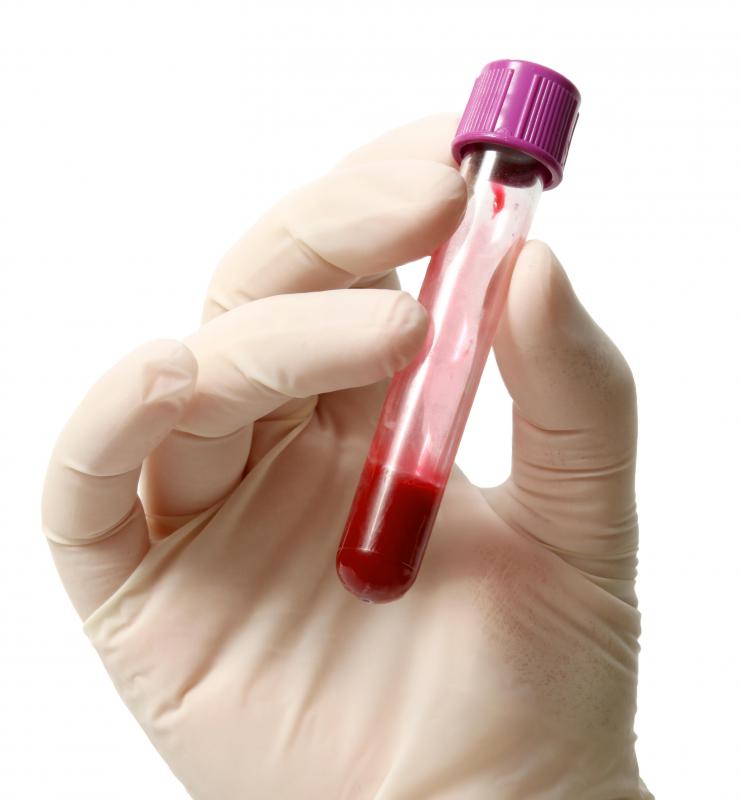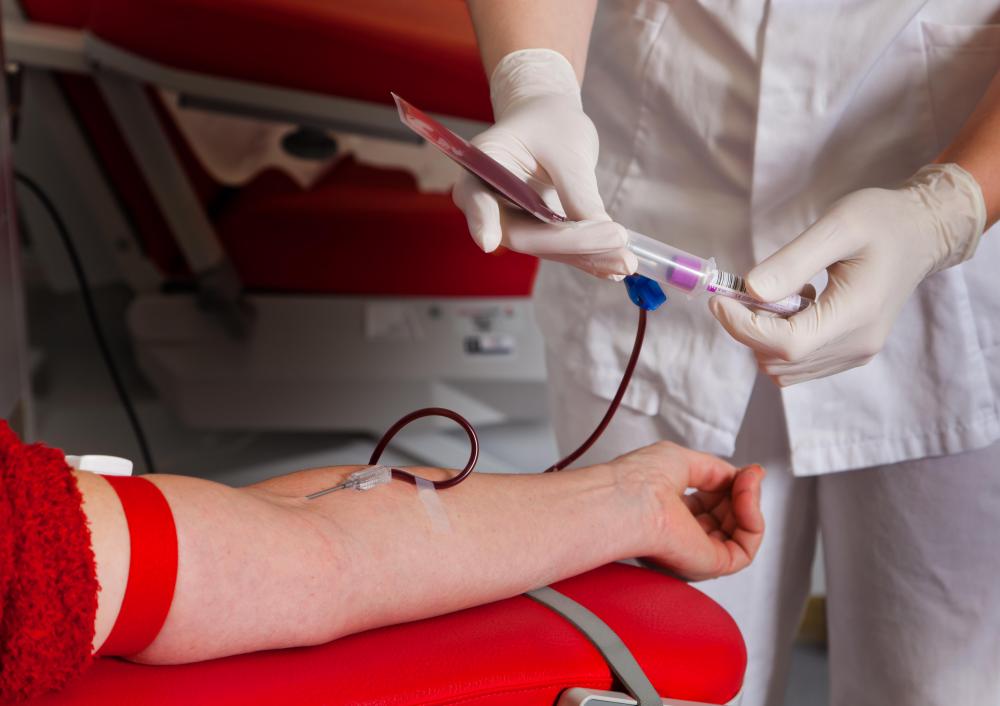At WiseGEEK, we're committed to delivering accurate, trustworthy information. Our expert-authored content is rigorously fact-checked and sourced from credible authorities. Discover how we uphold the highest standards in providing you with reliable knowledge.
What Is Hemoglobin Electrophoresis?
Hemoglobin electrophoresis is a blood test using protein electrophoresis. Doctors use it to determine the different types of hemoglobin present in a patient's blood and the ratio in which the different types occur. This test is commonly carried out to determine whether certain types of disease are present, if a patient is a carrier for a certain condition, and to evaluate the effectiveness of treatment for hemoglobin disorders. More than 400 different types of abnormal hemoglobin have been identified, all with varying levels of clinical significance.
To perform the test, a technician takes a blood sample from the patient and sends it to the laboratory for analysis. The principle behind hemoglobin electrophoresis is that each type of hemoglobin has a different electrical charge and can be distinguished accordingly. Doctors perform electrophoresis using some form of transport medium, usually a solid gel slab that has a prefixed pH. At one end of the slab is a set of wells that have been cut into the gel. The blood sample from the patient is introduced into the wells along with a control sample of known charge and identity.

Medical personnel then apply electrical current to the gel. The different types of hemoglobin migrate from the wells at the cathode, or negative, end of the gel, toward the anode, or positive, end. Hemoglobin travels during the hemoglobin electrophoresis at different speeds and forms visually identifiable bands in the gel according to type. The different types of hemoglobin travel known distances and thus can be readily identified by the pattern that appears. The differing thicknesses of the bands indicate the amount of each particular hemoglobin present.

Hemoglobin electrophoresis can be very important in determining abnormal hemoglobins that may have clinical implications for the patient. For example, a condition called sickle cell anemia can be identified with this technique. Sickle cell is indicated by the presence of hemoglobin S (HbS). Hemoglobin electrophoresis can further identify whether the patient actually has the disease or is a carrier of the trait, which may be passed to their children.

During the test, if the patient does not have the condition or the trait, no band appears at the known charge. If the patient is a carrier of the sickle cell trait, then a moderate band forms. For those with the condition, a thicker band becomes apparent. The results can be further quantified by using high-performance liquid chromatography, which indicates the amount of HbS as a percentage.
AS FEATURED ON:
AS FEATURED ON:














Discuss this Article
Post your comments